Strengthening System Response to Epidemic Outbreak: Lessons from COVID-19
Seminar held by Harvard T.H. Chan School of Public Health, Wuhan University, and Taikang Health Foundation on April 4, 2020
Background
COVID-19 has claimed many precious lives and has caused significant health, economic, social and psychological costs worldwide. The crisis is still unfolding and its damage promises to be catastrophic. Within China, the city of Wuhan suffered the most severe blow. A group of experts from the United States and China came together on April 4, 2020, for a special webinar to examine and reflect on appropriate policy decisions, especially given that knowledge about the disease is still evolving.
The inaugural seminar was sponsored by Taikang Health Foundation with the vision of advancing global collaboration and promoting unbiased evidence-based learning about how to formulate policies and improve health systems to more effectively prepare and respond to emerging health challenges, including future pandemic such as COVID-19.
Over a dozen speakers participated and were organized into a first session focusing on infectious disease control and epidemic response, and a second session looking at health care system responses, both sharing experiences from China and United States.
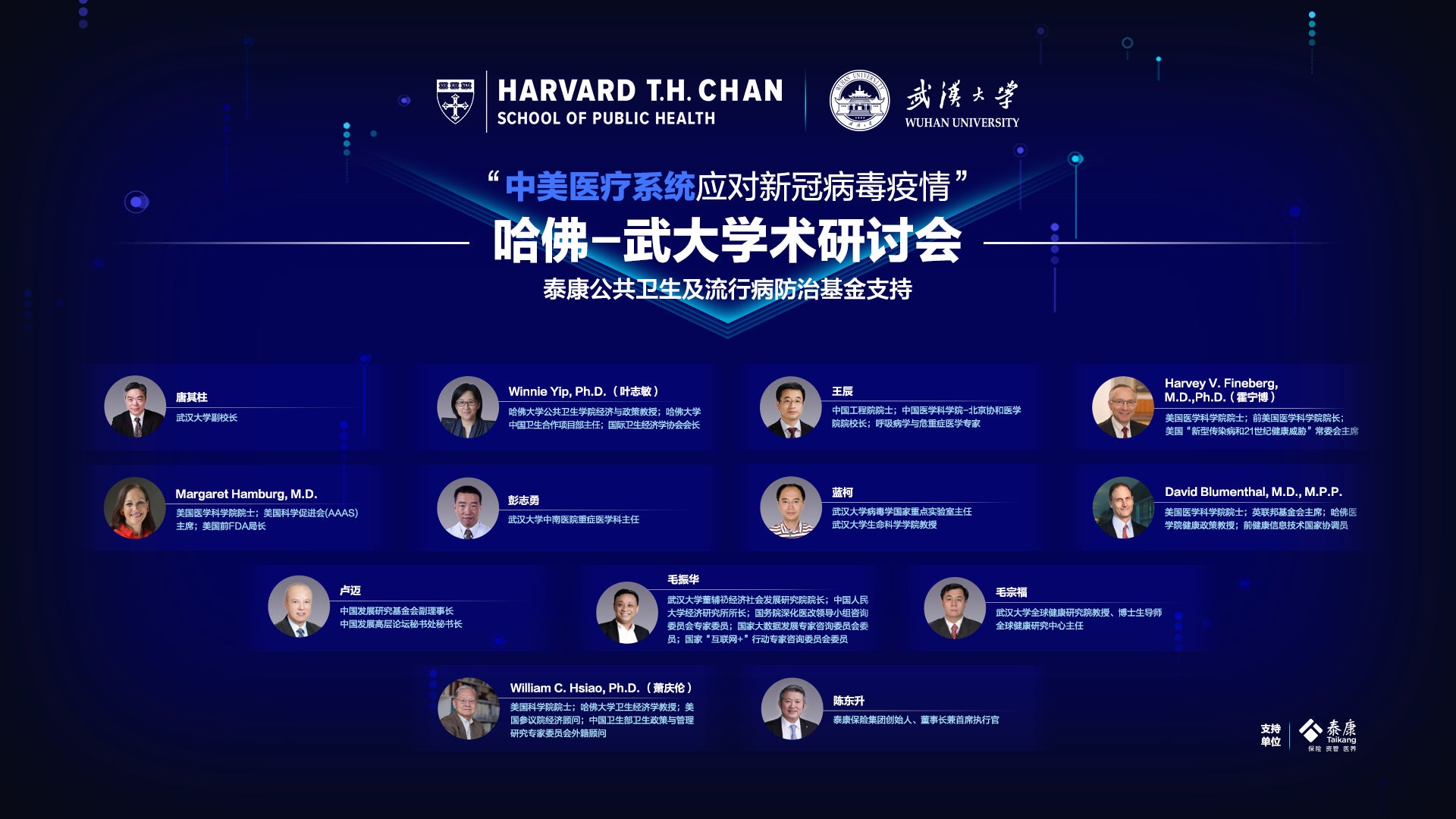
OPENING REMARKS
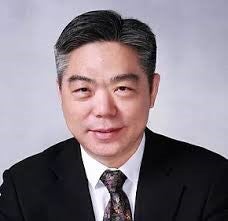
TANG Qizhu (唐其柱), Member of the Standing Committee of the Communist Party, Vice President of Wuhan University
The COVID-19 pandemic poses the greatest challenge to the world since World War II because of its high transmissibility. Global collaboration can leverage the strengths of each country to render full support to front-line hospitals to successfully treat patients and control the pandemic. Equally important is collaborative research to provide a strong scientific base to inform decision-making. This meeting helps initiate both types of collaborations.
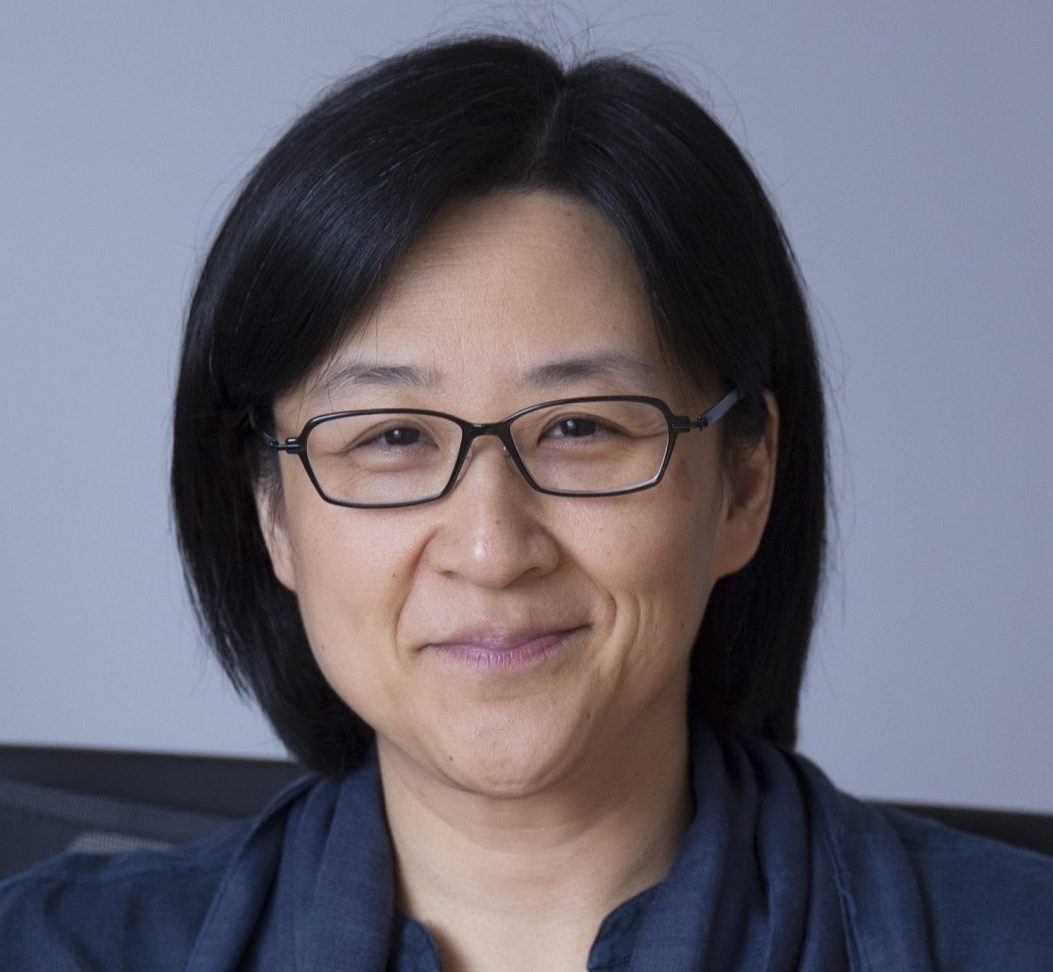
Winnie Yip (叶志敏), Professor of the Practice of Global Health Policy and Economics, Harvard T.H. Chan School of Public Health; Faculty Director, Harvard China Health Partnership; President, International Health Economics Association
Dr. Yip laid out the issues and context for the webinar. She highlighted four main questions to examine:
- SARs-COV-2 is a new virus with lots of unknowns—transmissibility, fatality, media of transmission, and so forth. How do you make decisions amidst uncertainty? Experts stress speed of early detection, early isolation, early tracing, and early treatment. But with so much unknown in the early stages of this outbreak and in the absence of complete knowledge, how can we do better in the future?
- How effectively a country can respond to an epidemic outbreak depends on its health care system. Both the Chinese and U.S. health care systems are hospital-centric and curative-based. In contrast, public health and primary care that focus on population-based prevention and management are relatively weak. How can the health care systems of both countries be transformed to provide a stronger foundation to meet emerging health challenges?
- During this outbreak, countries have deployed innovative technologies in contact tracing, monitoring and modelling. Telemedicine has been propelled from the periphery to the core of both Chinese and U.S. health care delivery during COVID-19 outbreak. How can we leverage these for the future?
- Finally, both China and the United States are large countries with complex governance structures between the center and the local governments, and between the CDC, health care delivery system, and insurance system. The FDA approval process is complex as well. How can decisions in such complex systems be better coordinated in a crisis, with clearer responsibilities and accountability?
SESSION I: INFECTIOUS DISEASE CONTROL SYSTEM RESPONSE
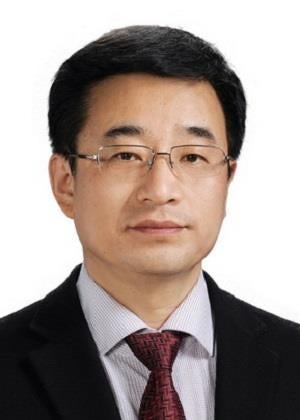
WANG Chen (王辰), President, Chinese Academy of Medical Sciences and Peking Union Medical College; Vice President, Chinese Academy of Engineering; Senior specialist in complicated and critical respiratory system diseases
Three policy decisions were instrumental in controlling COVID-19 in China. First, deciding to lock down Wuhan. Second, deciding to extend the Chinese New Year holiday. Both policies were crucial to reducing the spread of the epidemic outside of Wuhan/Hubei, which then allowed other parts of China to send medical resources to assist Wuhan/Hubei. Third, the establishment of temporary shelter hospitals (fangchan, 方舱) that allowed COVID-19 patients with mild symptoms to be isolated and cared for, which was critical in limiting transmission among family members and in the community. In Wuhan, there was a lot of experience with various clinical therapies, and serological testing and vaccine development remain top priorities. Different countries have pursued different policies for slowing the spread of COVID-19, and globally we should compare home isolation versus centralized isolation policies, continue the discussion about herd immunity, and consider how to deal with imported cases.

Harvey V. Fineberg, M.D., Ph.D, President of Gordon and Betty Moore Foundation; Former President of U.S. Institute of Medicine (now National Academy of Medicine); Former Provost of Harvard University; and Former Dean of Harvard T.H. Chan School of Public Health
While working on the immediate situation is important, it is equally important for both China and the United States to conduct evaluations to draw lessons for the medium- and long-term.
The first requirement of a policy evaluation is to seek an honest and complete assessment of what happened, what was decided when, what worked well, and what did not work. Secondly, any such evaluation must be independent of political influence. The evaluation team must fearlessly inquire what was known, what was decided, how instructions or plans or programs were implemented or not, and why.
Thirdly, an evaluation needs to look at the quality of decisions made at the earliest phases of an outbreak when information was most uncertain, as well as the quality of implementing or executing those decisions. The purpose of an evaluation is not to lay blame but to gain from that experience the lessons, the commitments, the plans that will make us better prepared the next time.
This pandemic will not be solved anywhere until it is solved everywhere. Let’s work together to put in place the lessons and improvements that will make us better prepared, and even more successful, when the next emerging infectious threat occurs.
During Q&A, Dr. Fineberg recommended that a top scientific council at the White House be established to advise the President and make decisions. A similar approach could be taken by other nations.
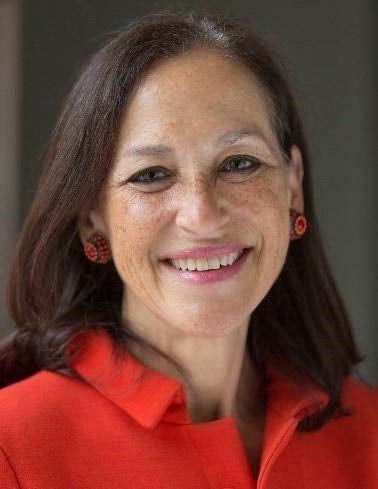
Margaret Hamburg, Foreign Secretary, National Academy of Medicine; and Former Commissioner, US Food & Drug Administration
Dr. Hamburg remarked that all our vital programs and policies must be built on the best available science, medicine and public health data and expertise, and there is a tremendous need for scientific collaboration. One critical area is surveillance. It is striking how many uncertainties and unanswered questions still do remain about how this virus spreads, the nature of asymptomatic spread, lethality, incubation, and importantly the risk groups and risk factors for severe and fatal disease.
It has been inspiring to see all of the collaboration around drug and vaccine development, and there are opportunities and challenges for us—in the United States and in China—to work together towards more meaningful and lasting solutions. In United States, it is critical to have the ability to undertake very targeted studies that require flexible funding to examine proof of concept of approaches within early studies to determine if more major investments are needed going forward.
The ability to work across borders is important to strengthen the science, but this leads to the importance of regulatory alignment and collaboration to agree on standards and approaches. As we advance products through the development process, we need to consider scale up in terms of the manufacturing, and also product distribution. Supply chain issues are also a great concern. All nations rely on each other in a globalized world in certain ways for product development and manufacturing.
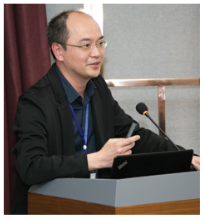
LAN Ke (蓝柯), Director, State Key Laboratory of Virology, Wuhan University
Chinese researchers shared the genomic sequence of COVID-19 relatively early in the pandemic. The team at Wuhan University had early identification of eight compounds with in vitro potential for treatment against the novel coronavirus, and research is ongoing. Researchers also found that the aerosol load is very low in open public environments. The gold standard for diagnosing outbreaks is the method of fluorescent quantitative PCR. Diagnosis of patients in the early stage of an epidemic, however, should use multiple detection methods to confirm the diagnosis, such as nucleic acid diagnosis, imaging diagnostics, serological diagnosis, and CT scans (pulmonary imaging) as an auxiliary diagnostic method to avoid missed tests.
SESSION II: HEALTH CARE SYSTEM AND POLICY RESPONSES
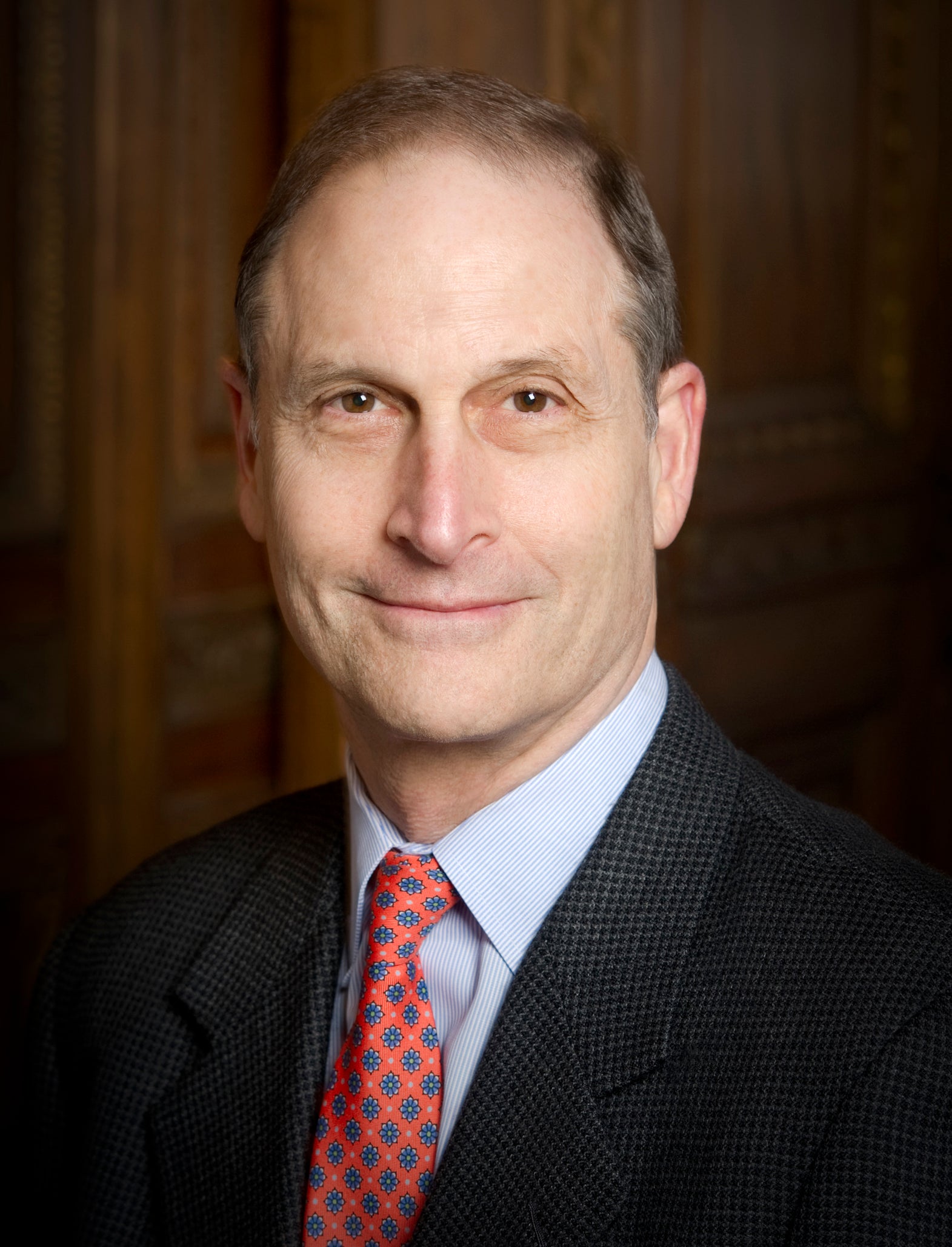
David Blumenthal, MD, MPP, President and CEO of the Commonwealth Fund
First, we are in the exponential phase of the epidemic spread in the United States. As of yesterday [April 3, 2020], we have 278,000 confirmed cases and more than 7400 deaths. The lack of available testing in the United States makes it very difficult to understand the incidence and prevalence of the virus, and to even predict where it will spread and how serious the epidemic will be in different locations. We have no centralized system for collecting data on the number of available hospital beds, the number of ICU beds, or the number of hospitalized patients who have been tested positive for this virus.
Second, where has our response fallen short in the United States? We lost more than a month in developing effective tests, and for reasons that remain unclear, we were unwilling to import tests like elsewhere in the world like South Korea and Germany. We have insufficient public health resources to conduct surveillance, to do testing, to do reporting, and we have a very weak information technology infrastructure to collect data and report centrally. There has been inconsistent leadership on importance of the virus and the epidemic both at local levels and national levels.
Third, why do we have these problems? The American system of government is designed to prevent the central exercise of authority. Provision of healthcare is a state and local responsibility under our constitution. Our national government does not have the authority to intervene in how states and localities decide to allocate health resources or intervene locally to prevent the spread of disease. Our healthcare system is decentralized, fragmented and privately owned. We treat our healthcare system as a normal competitive market, and encourage competition among local healthcare facilities, and yet we do not have mechanisms to encourage collaboration. However, we have strong professional ethic, and we have free and open sharing of information that has allowed us to identify the problems I have just described to you. I expect those problems will be addressed over time as pressure mounts and as the causes of these problems are revealed through reporting by our press.

MAO Zhenghua (毛振华), Dean, Dong Fureng Institute of Economic and Social Development, Wuhan University; and Director, Institute of Economics of Renmin University of China
In Wuhan, the most critical policy for combating COVID-19 and flattening the curve was the policy of “no patient will be left behind,” meaning that all patients, irrespective of severity, would be admitted for care at hospitals or at temporary shelter hospitals. There still is risk of a second wave, and therefore, there is an approach of “all people under quarantine and medical observation should be tested and all people who are willing to receive tests can be tested.” In addition, there are 1.3 million university students in Wuhan, and all universities in Wuhan are continuing online teaching for the whole semester.
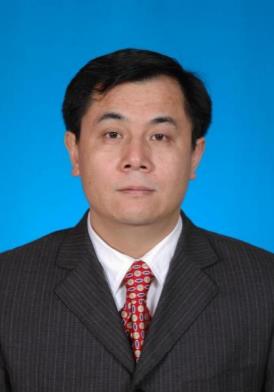
MAO Zongfu (毛宗福), Director, Wuhan University Institute of Global Health
There were four main reasons for the medical surge amid the epidemic in Wuhan. The first was the lack of knowledge about COVID-19, leading to under-estimation of the severity of the disease and wrong judgement and decisions. The second was the insufficient treatment capacity of Wuhan for COVID-19. The third was the disfunctions of primary health care “gatekeeping” at the early stage of the epidemic. The fourth was the extreme panic of citizens and disorders of patients after the lockdown.
There are three lessons from this epidemic. First, it is critical to act promptly during the early phase before the cases increase at an exponential rate. Second, mobilize sufficient high-quality medical resources as quickly as possible. Third, provide authoritative scientific information to guide public opinion and build confidence.
CLOSING REMARKS
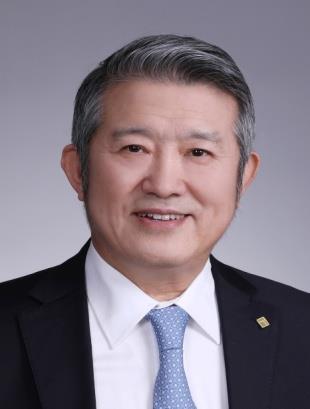
CHEN Dongshen (陈东升), Founder and CEO, Taikang Insurance Group
The fight against COVID-19 in Wuhan represents collective efforts by the government, the health care system, the health workers, the communities and the people, which bear important global lessons. In the 40 years of reform and opening up, a group of large enterprises like Taikang Insurance Group has emerged in China, which quickly mobilize resources around the world to integrate supply chains to meet Wuhan’s demand for prevention and control supplies, and also provide assistance on protective equipment to other countries with severe situation.
This pandemic is a result of globalization, but it also provides an opportunity to promote global cooperation because the pandemic has major implications for global human welfare, economy, finances as well as social stability. By working together, we can jointly establish a sustainable and stable system.
As a comprehensive health (大健康) enterprise, Taikang is willing to promote such exchanges between academia and the business community. Taikang Insurance Group established the Taikang Health Foundation with RMB 100 million [USD 14 million] and sponsored today’s seminar to launch this commitment. The Foundation is devoted to supporting research on China’s public health system and to help improve major epidemic control and emergency response. Its goal is to support long-term collaboration that will build an influential think tank to contribute to the development of national health systems with strong foundations in public health and primary health to meet emerging health challenges, including infectious disease outbreaks.
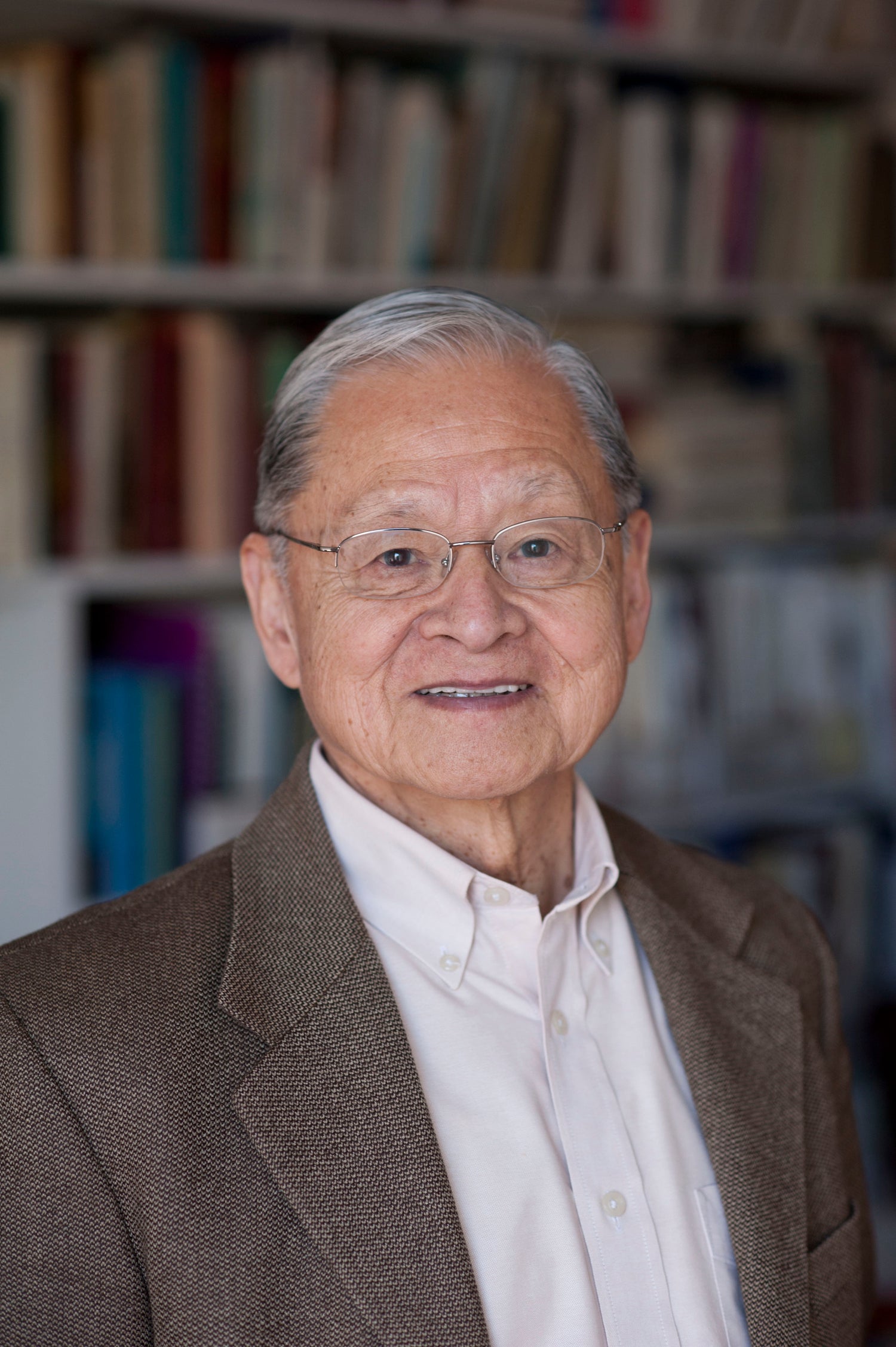
William Hsiao (萧庆伦), K.T. Li Research Professor of Economics, Emeritus, Harvard T.H. Chan School of Public Health
This seminar was a productive discussion among top U.S. and Chinese scientific experts, policymakers, as well as people who worked on the front line in Wuhan, China. China has the most experience and data about the virus and about patients during the early stage of the crisis. This information is critical for us to learn lessons from the outbreak of a new deadly infectious disease.
This virus has put public health on the top priority for many nations around the world. As Dr. Hamburg commented, scientists in the world are united and work in solidarity to try to understand the biological characteristics of this virus and develop prevention and treatment strategies.
As Dr. Fineberg recommended, we need a comprehensive, honest assessment of what happened, what policies were taken, and what were the successes and failures. So many nations are dealing with this virus, and in different ways. The purpose of evaluations is not to lay blame, but to draw lessons for the future so we can deal with future threats more effectively.
There will be new viruses. Dr. Hsiao predicts that we will have a new major virus appearing on earth on average every three to five years, based on what we have observed over the past 20 years with SARS, Swine Flu, Ebola, Zika, and now COVID-19. The question is, what kind of lessons and experience we can learn by working together and using rigorous scientific methods to draw the lessons so we can plan and prepare for the future.
In closing, Dr. Hsiao commended Chairman Chen Dongsheng for his foresight in bringing leading Chinese and U.S. scientists and experts together to discuss and think about how we can work together to draw on the lessons and experience we have to better prepare for the future.

